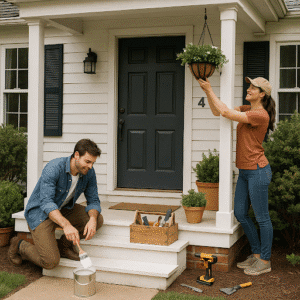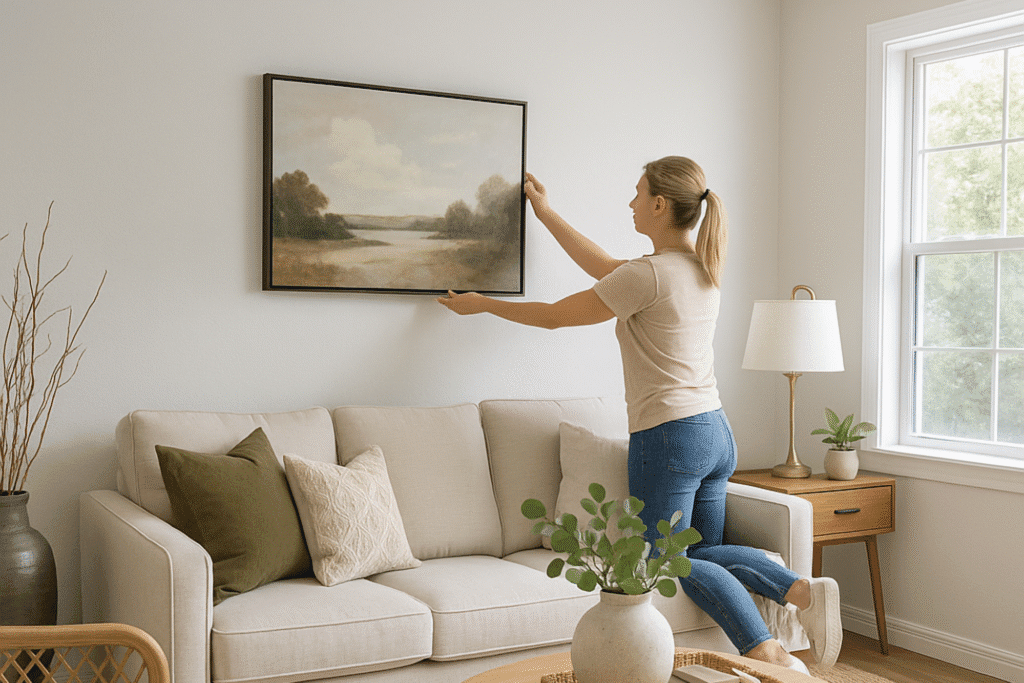When it comes to selling a home in Durham, first impressions shape everything. Buyers often decide within minutes whether they feel emotionally drawn to a property, and once that impression sets in, it can be difficult to change. That is why home staging tips are such an important part of the selling process. Staging helps a property feel inviting, well cared for, and easy for buyers to imagine as their own.
But just as staging can elevate a property, the wrong approach can have the opposite effect. Many of the most common staging mistakes sellers make stem from forgetting that buyers are guided as much by emotion as they are by logic. A cluttered space can feel stressful, bold paint colours can alienate, and overly personal décor can make it hard for buyers to picture themselves in the home.
For those selling a home in Durham, avoiding these pitfalls can mean the difference between quick offers and weeks of waiting. Reviewing current listings is a simple way to see how presentation impacts market performance in real time. Here are five of the most frequent staging mistakes, why they matter, and how to avoid them.
Mistake 1: Ignoring Clutter and Personal Items
One of the most frequent staging mistakes people selling a home in Durham tend to make is failing to declutter properly. Even if a home is clean, too much furniture, stacks of papers, or walls covered with family photos can overwhelm buyers. Clutter makes rooms feel smaller, and personal items remind visitors that they are in someone else’s house rather than imagining it as their future home.
From a psychological standpoint, clutter increases stress and reduces a sense of calm. Buyers may not articulate this, but subconsciously they register the home as chaotic rather than welcoming. The best home staging tips start with getting organized: removing excess items, packing away personal collections, and leaving just enough to suggest how the space can be lived in.

Mistake 2: Choosing Bold or Distracting Colours
Colour is powerful in shaping buyer perception. While bright feature walls or dramatic paint choices may reflect your personality, they can be polarizing. Sellers often underestimate how difficult it is for buyers to “look past” strong colours. Instead of seeing the size or function of a room, buyers focus on what they would need to change.
Neutral colours are one of the most practical home staging tips because they act as a blank canvas. Soft greys, creams, and light earth tones allow buyers to project their own style into the space. This small shift can have a big impact on how quickly selling a home in Durham captures interest.
Mistake 3: Over-Staging or Making Rooms Feel Artificial
Another common pitfall when selling a home in Durham is going too far with staging. Overly matched furniture sets, fake fruit bowls, or excessive décor can make the space feel more like a showroom than a home. Buyers often describe this as feeling “staged” in the wrong way – polished but not authentic.
The psychology behind this is clear: buyers want to imagine real life unfolding in the space. They want to picture children playing in the living room or family dinners in the dining room. When staging feels too artificial, it creates distance rather than connection. Practical home staging tips encourage balance – clean, modern styling that still leaves room for imagination.

Mistake 4: Neglecting Curb Appeal and First Impressions
Staging does not stop at the front door. Many sellers invest heavily in interiors but neglect the exterior. Peeling paint, untrimmed shrubs, or a tired front porch can undo all the effort inside. For buyers touring homes for sale in Durham, the driveway and front entry often shape their opinion before they even walk in.
Curb appeal works because of the psychology of first impressions. A tidy, welcoming exterior signals pride of ownership and reassures buyers about the condition of the rest of the home. Proper curb appeal sells homes faster, which means small updates such as fresh paint, seasonal plants, or new house numbers can dramatically change how buyers feel at the outset. Among the most overlooked home staging tips is treating the exterior as part of the staging process.
Mistake 5: Forgetting About Lighting and Flow
Light and space are two things buyers consistently prioritize, yet many homes are shown in ways that fail to highlight them. Dark rooms with heavy curtains, poor overhead fixtures, or blocked pathways between rooms can make a home feel cramped and uninviting.
Buyers rely heavily on their senses when touring a home. Natural light triggers positive associations of openness and warmth, while bright, layered lighting in the evenings creates energy and comfort. Clearing walkways and arranging furniture to support natural flow also helps buyers envision daily routines without friction. The best home staging tips for lighting include opening blinds fully, replacing dim bulbs, and using mirrors to reflect light.

Why Staging Mistakes Matter in Buyer Psychology
It’s worth remembering that buyers rarely make decisions on logic alone. Real estate choices are highly emotional, especially for families imagining a new chapter. A cluttered space can feel stressful, bold colours can feel risky, and dim lighting can feel depressing. These emotional cues often weigh more heavily than square footage or number of bathrooms.
Avoiding the most common staging mistakes sellers make ensures that buyers connect with your home positively. When a space feels neutral, bright, and uncluttered, buyers are more likely to imagine their own furniture, routines, and family life unfolding within it. That emotional connection often leads to faster offers and stronger negotiations.
Bringing It All Together
Staging is not about perfection. It is about creating an environment where buyers feel comfortable, optimistic, and excited. For individuals – selling a home in Durham often has the best results when you avoid the mistakes that turn buyers away. Declutter thoroughly, keep colours neutral, strike a balance between styled and lived-in, pay attention to curb appeal, and make sure lighting enhances every room.
These simple but powerful home staging tips work because they align with how buyers think and feel. When you appeal to psychology as well as aesthetics, you not only attract more buyers but also create the conditions for quicker, more competitive offers. Staging is only half the story – professional marketing for your home makes sure those first impressions reach the widest audience possible. If you’re thinking about selling, connecting with our team is often the best way to identify which updates will give you the highest return before you list.
